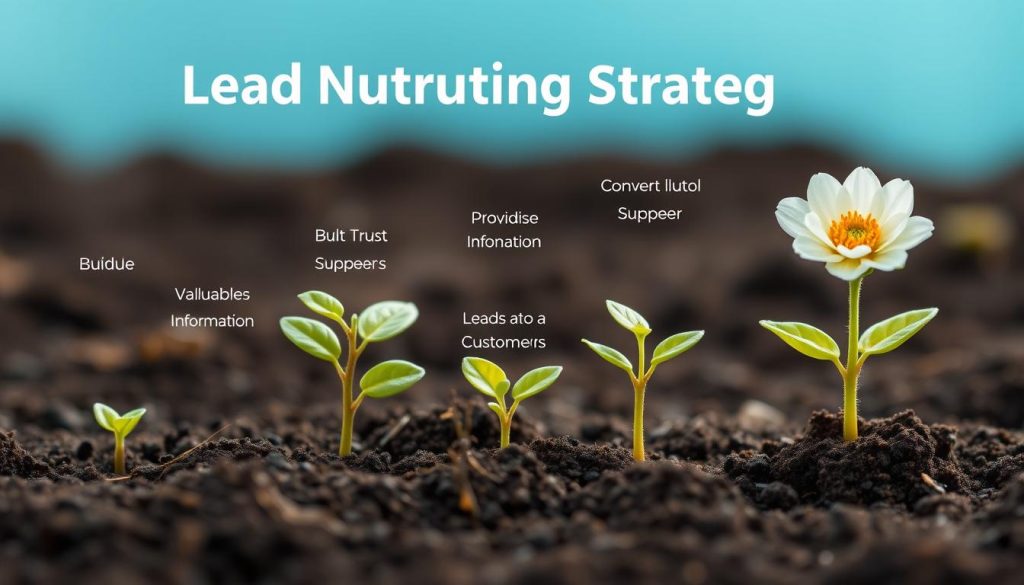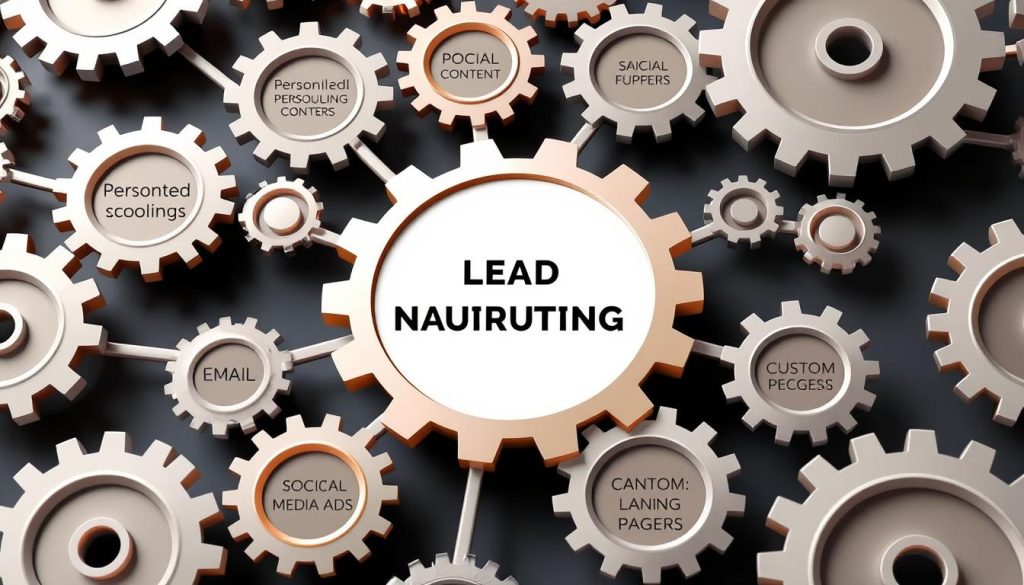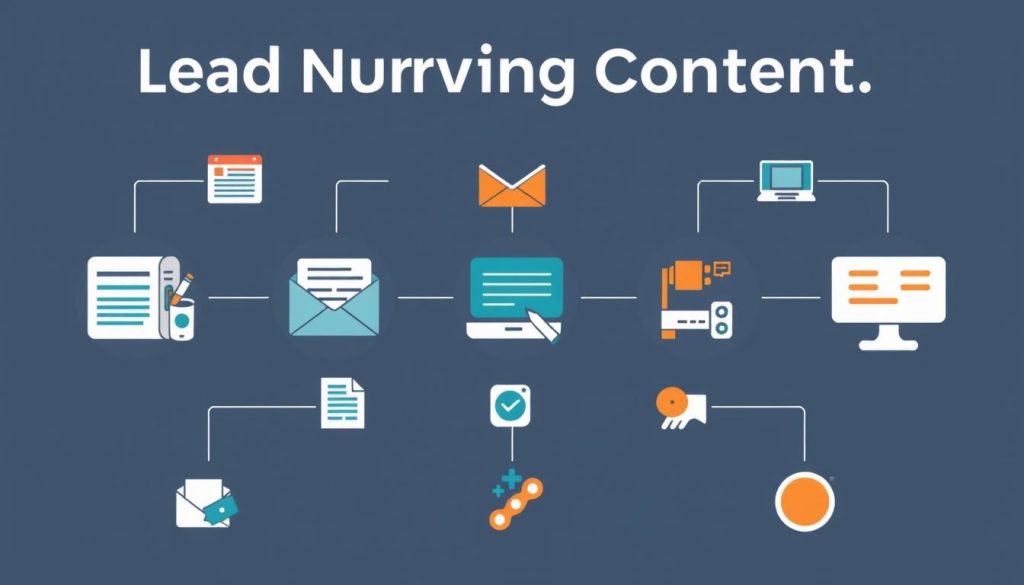Capturing leads online is just the beginning of the customer acquisition journey. The true challenge lies in effectively nurturing those leads and guiding them through the sales funnel. This comprehensive article delves into the essential strategies for lead nurturing after the initial online capture, empowering businesses to maximize their conversion rates and drive sustainable growth.
Key Takeaways
- Understand the significance of lead nurturing in the post-online capture phase
- Explore tactics for crafting personalized lead nurturing campaigns
- Learn how to segment leads for targeted and effective nurturing
- Discover content strategies that align with the buyer’s journey
- Leverage automation tools to streamline lead nurturing processes
- Measure and optimize lead nurturing campaigns for continuous improvement
- Integrate lead nurturing with sales processes for a seamless customer experience
Understanding Lead Nurturing After Online Capture
Lead nurturing is the process of engaging and guiding potential customers through the sales funnel, fostering relationships and building trust. It becomes especially crucial after an online lead capture, as it helps businesses maintain momentum, keep leads engaged, and increase the chances of lead conversion.
What is Lead Nurturing?
Lead nurturing is the practice of cultivating relationships with potential customers by providing them with relevant and valuable content. It involves a series of targeted interactions designed to guide leads through the buyer’s journey, from initial awareness to final purchase. By nurturing leads, businesses can keep them engaged, address their pain points, and position themselves as trusted advisors.
The Significance of Lead Nurturing Post-Online Capture
After an online lead capture, lead nurturing becomes essential for several reasons:
- It helps maintain the momentum and interest generated by the initial lead capture.
- Nurturing leads keeps them engaged and prevents them from falling through the cracks.
- Personalized nurturing campaigns can build trust and position the business as a reliable and helpful resource.
- Effective lead nurturing ultimately leads to higher lead conversion rates and increased revenue for the business.
“Lead nurturing is the process of building relationships with potential customers and guiding them through the sales funnel, even if they’re not ready to buy right away.”
By understanding the definition of lead nurturing and its importance in the context of online lead capture, businesses can develop effective strategies to nurture their leads and drive successful outcomes.

Crafting Personalized Lead Nurturing Campaigns
In the world of digital marketing, the key to successful lead nurturing lies in crafting personalized campaigns that resonate with each individual prospect. Personalized lead nurturing is the art of understanding the unique preferences, behaviors, and pain points of your leads, and then tailoring your nurturing efforts to address their specific needs.
At the heart of personalized lead nurturing are lead engagement strategies that focus on building meaningful connections with your prospects. By leveraging data-driven insights, you can create lead nurturing campaigns that deliver the right message, at the right time, through the right channel. This not only enhances lead engagement but also drives lead conversion tactics that ultimately translate into sales opportunities.
Strategies for Personalized Lead Nurturing
- Segment your leads based on their demographics, interests, and behaviors to create targeted nurturing campaigns.
- Develop personalized content that addresses the specific challenges and pain points of each lead segment.
- Utilize dynamic email campaigns that adapt to the individual preferences and actions of your leads.
- Implement lead scoring models to prioritize and nurture your most valuable prospects.
- Integrate your lead nurturing efforts with your sales process to ensure a seamless handoff and follow-up.
By adopting a personalized lead nurturing approach, you can create more meaningful connections with your leads, increase engagement, and ultimately drive higher conversion rates. It’s a powerful strategy that can help you stand out in a crowded marketplace and position your business for long-term success.

“Personalization is the key to effective lead nurturing. When you understand your leads as individuals and tailor your approach, you create a deeper connection that drives results.”
| Personalization Tactic | Benefits |
|---|---|
| Segmentation | Allows for targeted and relevant messaging |
| Dynamic Content | Increases engagement and response rates |
| Lead Scoring | Prioritizes leads for more efficient nurturing |
| Sales Alignment | Ensures a seamless handoff and improved conversion |
Segmenting Leads for Targeted Nurturing
In the world of lead nurturing, segmentation is key to unlocking personalized and effective campaigns. By dividing leads into distinct groups, marketers can craft tailored messaging and content that resonates with each audience’s unique needs and preferences. Two primary approaches to lead segmentation are demographic and behavioral segmentation.
Demographic Segmentation
Demographic segmentation focuses on categorizing leads based on factors such as age, location, job title, and industry. This approach allows marketers to understand the basic characteristics of their target audience and create personalized nurturing strategies accordingly. For example, a software company may segment its leads by job title, targeting C-suite executives with high-level thought leadership content, while nurturing entry-level professionals with more practical, skill-building resources.
Behavioral Segmentation
In contrast, behavioral segmentation delves deeper into the actions and engagement levels of individual leads. By analyzing factors like website interactions, email open rates, and content downloads, marketers can identify specific interests and pain points, enabling them to deliver highly personalized nurturing content. This approach is particularly effective in driving lead conversion, as it allows businesses to cater to the unique needs of each lead.
Leveraging a combination of demographic and behavioral segmentation strategies can empower marketers to create truly personalized lead nurturing campaigns that resonate with their target audience and drive meaningful results.

Content Strategy for Effective Lead Nurturing
Crafting a well-designed content strategy is crucial for successful lead nurturing. By aligning your content with the different stages of the buyer’s journey, you can effectively engage leads and guide them towards conversion. The key is to provide valuable, personalized content that addresses your leads’ specific needs and pain points.
Types of Content for Lead Nurturing
When it comes to lead nurturing content, there are a variety of formats you can leverage, including:
- Educational resources: Blog posts, whitepapers, and e-books that offer valuable insights and industry expertise
- Case studies: Showcasing real-world success stories and the benefits of your products or services
- Product demos: Interactive videos or webinars that highlight the features and capabilities of your offerings
- Personalized communication: Targeted email campaigns, social media outreach, and one-on-one interactions
Aligning Content with the Buyer’s Journey
To truly maximize the impact of your lead nurturing content, it’s essential to align it with the different stages of the buyer’s journey. By understanding your leads’ needs and behaviors, you can deliver the right content at the right time, guiding them seamlessly through the lead nurturing content, content types, and buyer’s journey.
| Buyer’s Journey Stage | Recommended Content Types | Goal |
|---|---|---|
| Awareness | Educational resources, blog posts | Establish thought leadership, lead engagement |
| Consideration | Case studies, product demos | Demonstrate value, lead conversion |
| Decision | Personalized communication, free trials | Facilitate decision-making, lead conversion |
By aligning your lead nurturing content with the different stages of the buyer’s journey, you can create a seamless and personalized experience that ultimately drives lead engagement and lead conversion.

Lead Nurturing Strategies After Online Capture
Effective lead nurturing is crucial after capturing leads through online channels. Crafting personalized and strategic nurturing campaigns can significantly boost lead engagement, drive lead conversion, and maximize the ROI of your marketing efforts.
One powerful lead nurturing strategy is email marketing. By segmenting your lead database and delivering tailored email content, you can keep your brand top-of-mind and guide leads through the buyer’s journey. Leveraging email automation tools can help streamline this process and ensure consistent, timely communication.
Social media platforms also offer excellent opportunities for lead nurturing. Engaging with leads on platforms like LinkedIn, Twitter, and Facebook can help build relationships, showcase your expertise, and encourage further interactions. Implementing targeted social media advertising and retargeting campaigns can also be effective in re-engaging leads and driving them towards conversion.
The use of marketing automation tools is another invaluable lead nurturing strategy. These platforms allow you to create personalized workflows, trigger targeted communications based on lead behavior, and track the effectiveness of your nurturing efforts. By automating the lead nurturing process, you can free up your team to focus on other strategic initiatives while ensuring leads receive the attention they need.
Successful lead nurturing after online capture requires a multifaceted approach, combining email, social media, and marketing automation. By implementing these strategies, you can effectively keep your leads engaged, guide them towards conversion, and maximize the return on your lead nurturing strategies, online lead capture, lead engagement, lead conversion, and marketing automation efforts.
Automation Tools for Streamlined Lead Nurturing
In the ever-evolving world of digital marketing, the power of lead nurturing automation has become a game-changer. By leveraging advanced marketing automation platforms, businesses can streamline their lead nurturing efforts, delivering personalized experiences that drive lead engagement and lead conversion.
One of the key benefits of automation tools is their ability to create customized email workflows. These automated sequences can be tailored to the unique needs and behaviors of each lead, ensuring that the right message reaches the right person at the right time. This level of personalization can significantly enhance the customer experience, ultimately leading to higher conversion rates.
Another essential feature of lead nurturing automation is lead scoring. These intelligent algorithms analyze lead activities and interactions, allowing businesses to prioritize the most promising prospects and allocate resources more effectively. By focusing on high-quality leads, companies can optimize their lead nurturing efforts and maximize their return on investment.
| Feature | Benefit |
|---|---|
| Customized email workflows | Personalized customer experiences and improved lead conversion |
| Lead scoring | Prioritization of high-quality leads and optimized lead nurturing efforts |
| Segmentation and targeting | Tailored content and messaging for specific audience segments |
| Reporting and analytics | Insights to measure the effectiveness of lead nurturing campaigns |
By harnessing the power of automation tools, businesses can streamline their lead nurturing processes, freeing up valuable time and resources to focus on more strategic initiatives. With the ability to segment leads, deliver personalized content, and track key performance metrics, organizations can optimize their lead nurturing efforts for sustained growth and success.
Measuring and Optimizing Lead Nurturing Campaigns
In the realm of data-driven marketing, measuring the success of your lead nurturing efforts is crucial. By tracking key metrics, you can gain valuable insights to optimize your campaigns and drive better results. From lead engagement rates to conversion metrics and return on investment (ROI), these data points can help you make informed decisions and refine your nurturing strategies.
Key Metrics to Track
- Lead engagement rates: Monitor how engaged your leads are with your nurturing content, such as email open rates, click-through rates, and content interaction levels.
- Conversion rates: Analyze the percentage of leads that convert into sales-qualified leads or customers as a result of your nurturing efforts.
- ROI: Calculate the return on investment for your lead nurturing campaigns, factoring in the cost of your efforts and the revenue generated from the leads nurtured.
Continuous Improvement Strategies
To optimize your lead nurturing campaigns, embrace a data-driven approach. Utilize A/B testing to experiment with different content, messaging, and delivery methods, and closely analyze the results. This will help you identify the most effective tactics and make data-driven adjustments to your campaigns over time. By continuously monitoring and refining your lead nurturing strategies, you can maximize your lead conversion rates and drive better returns on your marketing investments.
| Metric | Average | Top Performing |
|---|---|---|
| Lead Engagement Rate | 25% | 35% |
| Conversion Rate | 10% | 15% |
| ROI | $5 for every $1 spent | $7 for every $1 spent |
“Measuring and optimizing your lead nurturing campaigns is crucial for driving sustainable growth and maximizing the return on your marketing investments.”
Lead Scoring and Prioritization
In the world of lead nurturing, lead scoring and lead prioritization are two crucial strategies that can significantly impact your business’s success. By understanding and implementing these practices, you can efficiently allocate your resources, focus on the most promising prospects, and ultimately drive higher lead conversion rates.
Lead scoring is the process of assigning numerical values to leads based on their engagement, behavior, and fit with your ideal customer profile. This allows you to identify the most qualified and sales-ready leads, enabling your sales-marketing alignment efforts and ensuring your team dedicates their time and efforts to the most promising prospects.
To effectively prioritize your leads, consider factors such as:
- Demographic data (e.g., industry, job title, company size)
- Behavioral data (e.g., website interactions, content engagement, email responses)
- Fit with your ideal customer profile
- Lead acquisition source
- Explicit interest or intent signals
By weighting these factors and assigning appropriate scores, you can segment your leads and prioritize the ones with the highest likelihood of converting into paying customers.
Implementing a robust lead scoring and prioritization system allows your business to lead management more efficiently, ensuring that your sales team focuses on the most valuable opportunities and that your lead nurturing efforts are targeted and effective.
“Effective lead scoring and prioritization are the keys to unlocking your business’s growth potential. By identifying and nurturing the most promising prospects, you can maximize your return on investment and drive sustainable success.”
Integrating Lead Nurturing with Sales Processes
To maximize the impact of lead nurturing, it is crucial to seamlessly integrate these strategies with the sales team’s processes. This alignment between marketing and sales ensures a smooth handoff of qualified leads, ultimately driving higher conversion rates.
Aligning Marketing and Sales Teams
Fostering a collaborative environment between marketing and sales teams is the foundation for effective lead nurturing integration. Regular communication, joint lead scoring criteria, and shared performance metrics help create a shared understanding of the customer journey and the role each team plays in driving success.
Lead Handoff and Follow-up Strategies
The lead handoff process is a critical juncture where marketing’s nurturing efforts intersect with the sales team’s follow-up. Establishing clear protocols for lead qualification, prioritization, and transfer ensures a seamless transition that maintains the momentum built during the nurturing phase. Additionally, sales teams can leverage the insights gathered through lead nurturing to personalize their outreach and increase the likelihood of conversion.




